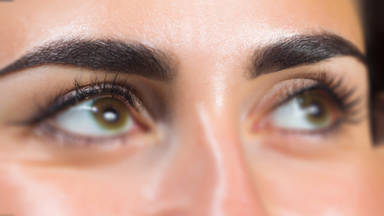
It is very common in cosmetics for people who have dyed or highlighted their hair to change their minds later and desire to dye it with a darker shade, or vice versa. A new hair color can make a big difference in how you look. Especially for people who dye their hair blonde or a lighter color, going back to their natural hair color after a while is not uncommon.
Is it possible for a higher level of bleach to be changed to a lower one instantly?
Many people ask this question since dyeing their hair black and then bleaching it, or bleaching their hair and then dyeing their hair black, is a common occurrence. It may also happen that someone with naturally dark hair dyes it to even a darker shade, but then later decides to lighten it to a platinum blond color that is almost light yellow. There are also people with light hair who wish to dye it to a darker shade of natural dye, such as level 4 shades.
In the bleaching process, the natural pigments in the hair are all removed, such as the yellow, orange, and red pigments. Therefore, you must add synthetic pigments to the hair, a process that is challenging.
When applying the material to the hair, there are two steps to follow. Hair dye tubes contain synthetic pigments and colors. To start with, You must prepare your dye's foundation. For damaged hair, preparing a foundation for the dye is even more crucial.
In itself, preparing the foundation is a two-step process. Since the red pigments in the hair have been removed during bleaching, it is necessary to add those pigments back to the hair during a dye process for level 4, 5, or 6.
Add fifteen to twenty milliliters of water to your dye and mix it thoroughly. The mixture must be without any oxidants.
First, start applying it to the back of the hair and move towards the rest. Use a tissue to remove any excess dye from the hair after applying the dye. Next, wait ten to twenty minutes depending on how thick or thin your hair is. For thin hair, ten minutes should be enough, while thick hair should be left on for twenty minutes to allow the pigments to penetrate.
After you have done this, you can apply the main dye you desired. This time you can use an oxidant agent to mix your material. However, you should ideally use the weakest oxidant agent possible, even if it is less than six percent, it is still suitable.
An oxidant with greater potency increases the dye's volatility. Bleached or blond hair has very weak cuticles, so even the weakest oxidant can open them easily, It is therefore unnecessary to use an extremely powerful one and potentially damage your hair. Depending on your dye brand and instructions, let the hair sit for 35-40 minutes before rinsing.
If you add synthetic pigments to your bleached hair, your hair will be damaged in the long run. People often overlook this effect, believing it is not possible to damage bleached hair while dyeing it. Nevertheless, this is a myth, since when you dye your hair a dark color, you are injecting a high concentration of synthetic of red, yellow, and orange pigments into the hair cuticles. We do not recommend this process since it can damage the hair in the end. You should be aware of the fact that this process can be even more harmful than bleaching.
Is it possible for a person with naturally black hair to bleach it this way?
As we discussed earlier, three main natural colors exist in your hair pigments, red, green, and yellow. Once you dyed your hair, these pigments were added again to it. You must force the color out of the cuticles of the hair in order to remove these pigments. In this process, some people mistakenly believe that using simple decoloring agents can accomplish this. Because of this,A lot of people end up damaging their hair.
Instead of bleaching material, we always recommend using a hair color remover. Furthermore, it is recommended that this process be performed in two sessions rather than in one. The only exception to this rule is when the person's hair has not been ironed excessively and their scalp skin has not become dry due to blow drying or dyeing, and some Keratin and natural moisture is still present in the hair.
In any other case, undergoing the process in just one sitting will most likely damage your hair, so it's best to do it in two sessions or even three sessions. If possible, you should avoid this process altogether and instead wait until the hair has grown long, then bleach the newly grown hair and cut the previously dyed part.
No matter how much recovering product you use to moisturize your hair and restore it, you will never be able to restore your hair to its original color when you remove dark hair colors like black or wine. There will be no restoration of your hair as all of the moisture and Keratin content has been removed from the hair cortex.
In some instances, people with dark hair bleach it, dye it another dark color, and then dye it a light color again, and eventually wanting to remove the color from their hair. After reading what I've told you so far, you can imagine the amount of damage you could do to your hair if you remove the synthetic pigments after bleaching. The process will damage your hair greatly, and at the end, your hair will be very damaged and burnt.
I hope some of the questions that you had were answered. As your hair is one of the most effective components of cosmetic beauty, it is extremely important to take good care of it. Don't forget to check out our other articles about hairstyling and hair dye to learn more about hairstyling and hair dye techniques.









